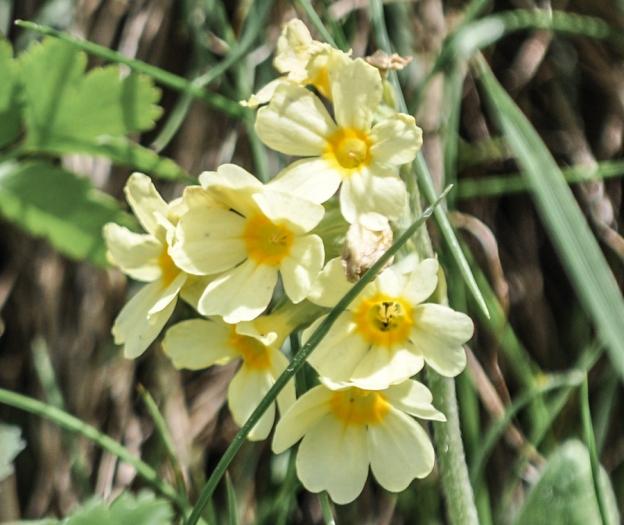Oxlip
(Primula elatior)
Oxlip (Primula elatior)
/
/

gianluigi
Public Domain
Image By:
gianluigi
Recorded By:
Copyright:
Public Domain
Copyright Notice:
Photo by: gianluigi | License Type: Public Domain | License URL: http://creativecommons.org/publicdomain/zero/1.0/ | Rights Holder: gianluigi | Publisher: iNaturalist | Date Created: 2018-07-04T11:14:15-07:00 |




















































Estimated Native Range
Summary
Primula elatior, commonly known as Oxlip, is a semi-deciduous perennial herb native to open woodlands, grasslands, and riverbanks in Europe, particularly in England, Scandinavia, and parts of Central Europe. It typically grows to a height and width of 0.7-1 feet (21-30 cm). Oxlip features rosettes of soft green leaves and upright stems bearing clusters of fragrant, pale yellow flowers with deeper yellow centers, often tinged with orange or red, blooming in early to mid-spring. The flowers are highly attractive to pollinators and add a splash of color to spring gardens.
Oxlip is valued for its early spring flowers and its ability to naturalize in suitable conditions, creating a charming, woodland garden effect. It is often used in informal settings such as wildflower meadows, woodland gardens, and as underplanting for deciduous trees. While it can be grown from seed as a biennial and treated as bedding, many gardeners appreciate its perennial nature and allow it to self-seed. Oxlip prefers a sheltered position with dappled sunlight or part shade, consistently moist but well-drained soil, and benefits from a layer of organic mulch to retain moisture. It has earned the Royal Horticultural Society’s Award of Garden Merit for its garden performance. Care should be taken to avoid overly wet conditions in winter, which can lead to root rot. Additionally, slugs and snails may target the foliage.CC BY-SA 4.0
Oxlip is valued for its early spring flowers and its ability to naturalize in suitable conditions, creating a charming, woodland garden effect. It is often used in informal settings such as wildflower meadows, woodland gardens, and as underplanting for deciduous trees. While it can be grown from seed as a biennial and treated as bedding, many gardeners appreciate its perennial nature and allow it to self-seed. Oxlip prefers a sheltered position with dappled sunlight or part shade, consistently moist but well-drained soil, and benefits from a layer of organic mulch to retain moisture. It has earned the Royal Horticultural Society’s Award of Garden Merit for its garden performance. Care should be taken to avoid overly wet conditions in winter, which can lead to root rot. Additionally, slugs and snails may target the foliage.CC BY-SA 4.0
Plant Description
- Plant Type: Herb
- Height: 0.7-1 feet
- Width: 1-1.3 feet
- Growth Rate: Moderate
- Flower Color: Yellow
- Flowering Season: Spring
- Leaf Retention: Semi-Deciduous
Growth Requirements
- Sun: Part Shade
- Water: Medium
- Drainage: Medium
Common Uses
Bank Stabilization, Bee Garden, Bird Garden, Butterfly Garden, Deer Resistant, Drought Tolerant, Edible*Disclaimer: Easyscape's listed plant edibility is for informational use. Always verify the safety and proper identification of any plant before consumption., Fragrant, Groundcover, Hummingbird Garden, Low Maintenance, Potted Plant, Rabbit Resistant, Rock Garden, Salt Tolerant
Natural Habitat
Open woodlands, grasslands, and riverbanks in Europe
Other Names
Common Names: True Oxlip, Fladkravet Kodriver, Etelänkevätesikko, Hagenøkleblom, Lundviva
Scientific Names: , Primula elatior,
GBIF Accepted Name: Primula elatior (L.) L.